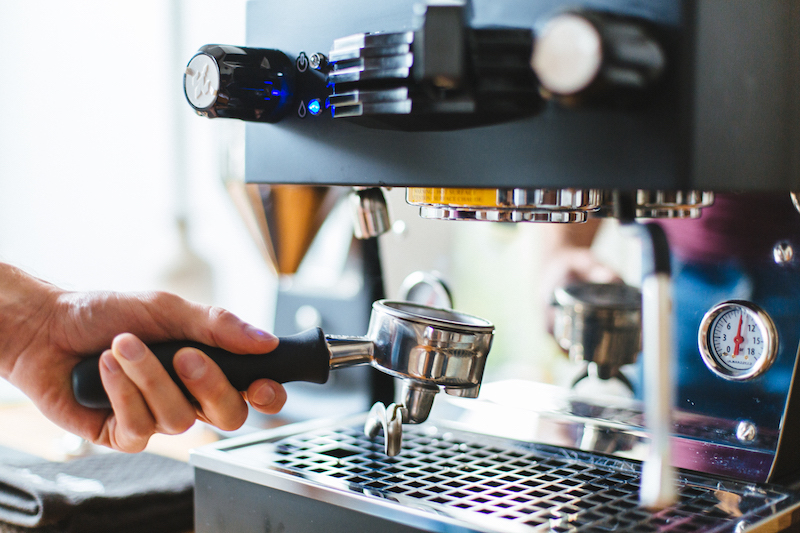Making espresso coffee is an art, and requires high water pressure. Stove top espresso coffee makers do a good job, but the water is only a low pressure, so a machine is used to force the water through at a high pressure to produce the best espresso.
There are lots of types of machine available, from manual espresso machines, to fully automated coffee stations that will grind the beans, pack them and produce a perfect shot of espresso.
Espresso Coffee Machines
are not cheap, so beware the budget versions that claim to make espresso, but don't have the required water pressure of at least 9 bar. Check the specifications!
Espresso Coffee is a method of preparation, and not a particular bean, roasting method or blend. It is a very controlled and precise method of forcing hot water (88°-93°C - 190°-200°F) under pressure (9 or more bars) through a precisely ground measure (seven-gram or .25 oz) of coffee beans to make 30ml (one oz) of espresso coffee. When buying ground coffee those marketed as for espresso should have the optimum grind.
History of Coffee
The origin of coffee is thought to date back to the 10th century in Ethiopia, with coffee drinking well known in the Sufi monasteries of Yemen from the 15th century.
From there it spread through Africa, India and the Middle East, and on to Europe in the 16th century, and the Americas, arriving in the Caribbean as coffee seedlings in 1720.
After independence in Brazil in 1822 coffee growing expanded with the clearance of rainforest. Coffee drinking became much more popular in America after the the Boston Tea Party of 1773 during the American Revolution rather than tea.
By the late 19th century coffee drinking was popular worldwide, with the main production in Latin America. The main coffee producing countries are now Brazil, Vietnam, Colombia, Indonesia and Ethiopia.
The Espresso Coffee Machine
The invention of the espresso coffee machine is usually attributed to Angelo Moriondo of Turin, Italy, and his patent of 1884 for "new steam machinery for the economic and instantaneous confection of coffee beverage".
Later, in the early 20th century Luigi Bezzerra invented the single-shot espresso machine, and together with Desiderio Pavoni, who bought the patents, and introduced the “cafeé espresso“ at the 1906 Milan Fair, which then began to appear throughout Italy.
There's a good review of espresso machine history at The Smithsonian Institution.
How to make Espresso Coffee
Step 1 - Grind your beans!
Ideally you should grind the beans just before making the espresso. Some espresso machines have this feature built in. The grind should be quite fine, and you'll have to experiment with your grinder to get it right for you. Alternatively you can buy already ground coffee, some are labelled for espresso.
Step 2 - Heat up the espresso machine
Turn it on and wait for it to be ready. It is also good to run the hot water through the machine, coffee holder and into the cup to warm them.
Step 3 - Tamp the coffee
Add the ground coffee to the holder or filter handle, and tamp twice. First lightly, and then with more force. Again, you will have to experiment to get it right for the particular espresso machine, and your own tastes.
Step 4 - Brew the espresso
Attached the filter handle to the machine and switch in to force the hot water through the ground coffee and into the waiting cup. You can vary the amount of water used so as to make the traditional 30ml measure, or by leaving it longer it will produce more, but weaker coffee. Adjust to your own preference.


